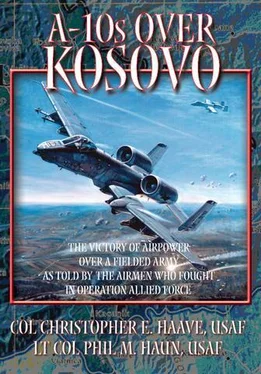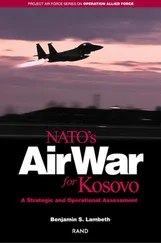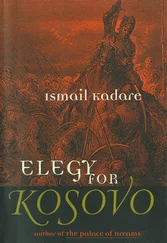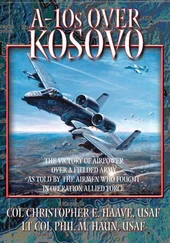During late April, Lt Col Arden B. “Surgeon” Dahl, our 52d Fighter Wing chief of weapons and tactics, had a “eureka style” revelation while we Hog drivers discussed this problem at Gioia. Surgeon drew on his experience at the School of Advanced Air and Space Studies (SAASS) and noted that, while KEZ operations attacked ground forces, they did not explicitly seek a ground-force objective, such as “occupy the high terrain by X date” or “reduce the combat effectiveness of (named enemy unit) by X percent.” This should have been obvious to A-10 guys from the start, since we had grown up supporting the ground commander’s scheme of maneuver from the air. However, we had not been given an “on the ground” objective to achieve in Kosovo. We understood that our KEZ operations sought airpower victory over deployed enemy ground forces, but we did not know what would constitute “victory.” Through our chief CAOC representative, Lt Col Craig “Walrus” Heise, we proposed that intelligence experts identify Serb army units and their locations in Kosovo so we could systematically attack them and achieve a yet-to-be-defined joint objective. We also proposed a FAC conference at Vicenza that would allow us to compare notes and hammer out a common way forward. Both of those initiatives won approval. Afterward, our ATO listed the Serb Third Army as our main objective.
Defining our objectives did not make a big difference in our daily results, since KEZ operations did not have sufficient priority on reconnaissance assets to locate and track Third Army command posts and operational units (see chap. 5 for more details). We argued at the FAC conference for the need to develop a joint concept of attacking Serb ground forces that included NATO ground assets stationed in Macedonia and Albania. Later in the campaign, we understood that the CAOC was working closely with Army counterbattery radars. We, however, had practically no contact with our NATO ground colleagues throughout the campaign.
KEZ operations did keep daily pressure on the Serbs, and although some days resulted in very little battle damage assessment (BDA), we often forced the Serbs to make seemingly stupid mistakes. On at least three occasions, Hogs caught and destroyed significant armored forces (10–15 tanks and armored personnel carriers [APC]) congregated in the open. We termed these puzzling groupings of real armor (they burned black smoke or caused secondary explosions) Serb army “picnics” or “meetings” that got interrupted. Continuous AFAC pressure paid off most when the Kosovo Liberation Army (KLA [English] or UCK [Albanian]) started its meager, but certainly effective, ground offensive in the last 10 days of the conflict. When the Serbs came out to fight, there was no place to hide. We were then able to inflict very heavy damage, especially on enemy artillery, mortars, and APCs.
Combat Search and Rescue Leadership
A-10 Sandys had CSAR responsibility for the entire theater of operations throughout the campaign. If required, they could also lead a search and rescue (SAR) mission in friendly territory. The location and reaction time for CSAR alert were two aspects of the mission that did change over time. Friendly forces can make only an educated guess as to where the risk of having one of their aircraft shot down is greatest. Therefore, CSAR is an alert mission that initially has many unknown factors, including the location and condition of the survivor, as well as the enemy threats in that rescue area. CSAR forces can “sit” ground alert or fly an airborne alert. During ground alert, the aircraft are loaded with ordnance appropriate for a CSAR mission and then “hot cocked” by the pilots. The pilots hot-cock the aircraft by starting the engines, aligning the aircraft navigation systems, performing ground checks up to preparation for taxi, shutting down the engines, and then presetting the switches. In the event they are “scrambled,” all the pilots have to do is start the engines and go. During an airborne alert, appropriately loaded A-10s take off, fly to, and remain at a specified orbit to cover the time window during which friendly aircraft are flying over enemy territory. Usually, at least two flights of A-10s are tasked to cover CSAR. One flight locates and stays with the survivor; the other escorts the recovery helos and/or relieves the Sandy who is functioning as the on-scene commander when that Sandy must depart the area to go to the tanker for fuel.
The key considerations that drive the decision to use ground or airborne alert are the level of enemy threat, the reaction time to a potential survivor, and the availability of A-10s in the tasked unit. If there were an unlimited number of A-10s and if CSAR were the only mission, all strike packages could have a dedicated airborne Sandy alert. However, flying an airborne alert takes more aircraft than ground alert and diminishes a unit’s ability to execute other required missions. Ground alerts were therefore regularly used to allow a squadron to better manage its limited resources to support other important missions during nonstop operations.
One of the thorniest puzzles we faced throughout the campaign was optimizing the available A-10 sorties. We needed to cover the tasked AFAC and strike missions while ensuring adequate CSAR coverage for all other OAF missions being flown. At the beginning of the air campaign, the 81st was based at Aviano and was expected to reach target areas in both northern Serbia and Kosovo from a single CSAR alert posture. To satisfy this requirement, given the distance to Kosovo and the uncertainty of the surface-to-air radar-missile threat, we insisted on having at least one two-ship airborne over the Adriatic and another on ground alert. We also assigned an experienced A-10 pilot to ride aboard every C-130 ABCCC during the first week of air strikes to help coordinate rescue efforts and minimize the confusion that normally breaks loose when an aircraft goes down. Airborne OAF aircraft would have to be directed to support the CSAR effort or leave the recovery area. We expected our pilots on board the ABCCCs to help with those tasks, as they did on the evening of 27 March, when they helped coordinate the efforts of six A-10s and numerous other aircraft during the successful rescue of Vega 31 (see chap. 7 for a detailed discussion).
We started flying AFAC missions and a heavy schedule against ground targets on 30 March. As a consequence, A-10 Sandys were scheduled for ground CSAR alert at night, instead of airborne alert, to maximize the number of day AFAC and strike sorties. We adopted an innovative scheduling technique to provide CSAR for the hundreds of day missions that took friendly aircraft over bad-guy land. We “embedded” at least four Sandy-qualified pilots in the AFAC and strike-mission schedule to ensure a continuous airborne Sandy presence in the target area. These pilots could easily respond to a CSAR mission should the need arise. When we were not able to schedule a continuous Sandy presence, we provided ground-CSAR alert.
On 1 May, four ground-alert Sandys were launched from Gioia del Colle to lead the rescue of Hammer 34, an F-16 that had been shot down in northern Serbia. While it was successful, the time required for the A-10s to arrive on scene meant that daylight was approaching by the time the pilot was picked up. The additional risk associated with daylight rescues and the response time from Gioia del Colle led the CAOC to decide to open a second CSAR ground-alert base at Taszar, Hungary. The Killer Bees from Trapani graciously accepted the tasking to man this detachment and provide a faster response to a possible CSAR in northern Serbia. The 81st and 74th EFS, under the OPCON of the 40th EOG at Gioia del Colle, retained 24-hour CSAR responsibility for KEZ operations and interdiction strikes in southern Serbia.
Читать дальше












